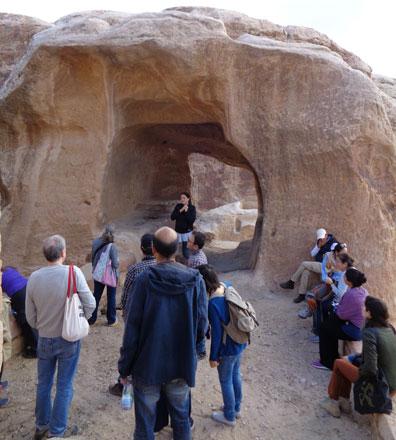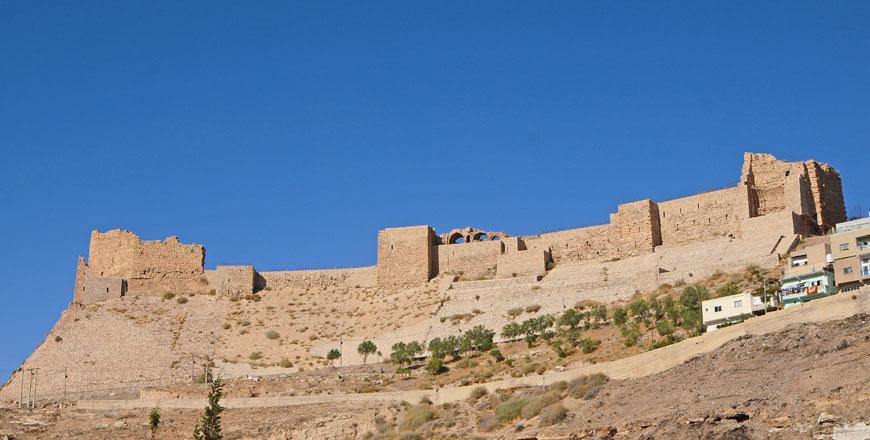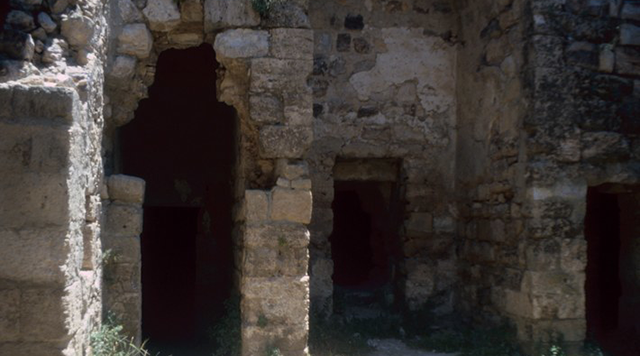You are here
Detailed history of Karak Castle discoverable by analysing architecture — archaeologist
By Saeb Rawashdeh - Dec 16,2018 - Last updated at Dec 17,2018

Karak Castle, founded in the 12th century, can be seen from above, October 2018 (Photo courtesy of Robert Bewley APAAME)
KARAK — By analysing the architecture and historical documentation, it is possible to reconstruct a detailed history of the Karak Castle during the Crusader period, an Italian archaeologist said during a recent public lecture held at Mutah University.
“Upon its foundation during the Crusader period, in 1142, the Karak Castle became the capital of the Lordship of Transjordan, which was part of the Latin Kingdom of Jerusalem — the Crusader state including the city of Jerusalem itself,” noted Micaela Sinibaldi, a specialist of the archaeology of the Crusader and Islamic periods.
The Shobak Castle, which was founded in 1115, was the first Crusader castle of the lordship, and its main centre of power. However, Shobak was replaced in its central role by Karak almost 30 years later, when the Franks felt that they had reached a greater state of confidence in the control of their territories in the region.
“The position of the castle was carefully chosen and was highly strategic. The capital of the Lordship of Transjordan was considerably closer to Jerusalem and therefore more strongly connected to it,” the scholar said, adding that the castle’s position allowed for tight control of the movements of both Muslim armies and pilgrims along the segment of the Hajj Road leading to Mecca and Medina which ran through Transjordan.
“The region of Karak was largely Christian and at the centre of an agriculturally prosperous area; all of these elements were important,” she continued.
“The castle became one of the main Crusader fortresses of the Middle East, and it gained a reputation for its impregnability; the fortress surrendered to Saladin in 1188, but it was never taken by assault,” she highlighted.
The architecture of the Crusader phases of the castle are complex, and can only be fully mapped and understood with the use of a discipline called the Archaeology of Standing Buildings (or Buildings Archaeology), which explores structures with an archaeological methodology.
This becomes essential when dealing with a complex structure like the Karak Castle, since it allows scholars to organise large amounts of data in chronological sequence.
After finishing the detailed reconstruction of the castle’s phases, “this can be studied in connection with the other archaeological sources and with the documentary sources... not only to create accurate reconstructions of each phase and activity of the monuments, but also to plan conservation at its best,” Sinibaldi pointed out.
With the end of the Crusades, the Ayyubid and Mamluk rulers continued to use the castle because of its very strategic position and added large segments to the building, she said.
“Today, the Karak Castle is an impressive monument, displaying, with its architecture, a long part of the history of Jordan, including not only the Crusader, Ayyubid and Mamluk periods, but also several earlier phases,” Sinibaldi stressed.
However, despite its significance, the site is “unfortunately not visited enough by tourists”, and most of the time it is presented as simply a “Crusader castle”, which does not do it justice, she added.
Future work at the site should include a detailed study of the structure’s entire history, in order to paint a full picture of the site, concluded the archaeologist, whose study was a part of her PhD research, completed in 2014 at the University of Cardiff in the UK.
Related Articles
AMMAN — A group of 10 foreign archaeologists recently concluded a tour of little-known Crusader-era sites in Jordan to learn more about the
Amman — Karak Castle is the most famous Crusader-Islamic military site in Jordan and appears today as a perfect summary of Crusaders’, Ayyub
AMMAN — The Karak Castle has a prominent role in history of crusades and post-crusade Mamluk-Ottoman periods.














